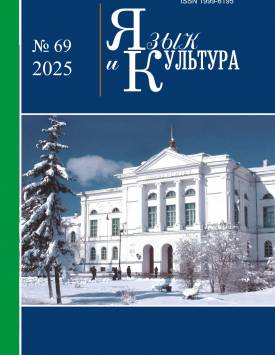Case study method in teaching foreign language discourse to law students
The modern trend in the educational space of higher education institutions is the wide spread of analytical activity, with a shift of attention to the professional orientation of the educational process. In the current conditions of the educational paradigm, an important task is the formation of a person capable of critical thinking, able to apply analytical abilities and skills in practice. A specialist in the field of jurisprudence is a prospective specialist of a new format, possessing relevant professional and linguistic competencies, capable of self-realization, creativity, critical thinking and selfimprovement in the conditions of transformation of the modern labor market. In this regard, in the context of teaching professional foreign language discourse to law students, great importance is given to the creation of pedagogical conditions aimed at the intellectual development of students, activation of cognitive creative abilities, development of foreign language communication skills, theoretical and practical readiness for future professional activity. The case study is a technology that has the potential to maximize the learning process to the professional activity of future lawyers. The analysis and solution of cases is based on the interconnectedness of legal and linguistic content. On this basis there is actualization of legal, linguistic and extra-linguistic knowledge and skills, students' motivation to perform future professional functions and use a foreign language increases. The aim of the study is to substantiate the relevance of case study technology in the process of teaching foreign language discourse to law students. Research objectives: to analyze and substantiate the theoretical and methodological foundations for case study technology in the process of teaching foreign-language discourse; to identify the features of the case study method in the educational activities of law students; to show the effectiveness of the case study method in teaching foreign language discourse in order to increase cognitive activity in solving practical professional problems of legal nature and improve law students’ knowledge in a foreign language. The theoretical and methodological foundations of the current study, a set of approaches to foreign language teaching of law students, such as synergetic, competence-based, communicative, contextual are determined. The process of teaching foreign language professional discourse using case study technology is considered from the point of view of mutual influence and complementation of these methodological approaches for a holistic understanding of the structure and content of the modern educational process. The article defines the technological possibilities and advantages of the case study method in teaching foreign language professional discourse. The importance of cooperation, reflection and experience in the implementation of this technology is emphasized. The authors describe the experience of teaching foreign language discourse to students of TSU Law Institute within the framework of the discipline “Foreign language in the field of jurisprudence” on the basis of the case study method. Classes on analyzing the case problem situation are held in accordance with the established stages and a certain algorithm of work. Based on the foregoing the authors conclude that the use of case study technology in teaching foreign language discourse to law students is justified by modern requirements for a legal specialist who not only possesses certain knowledge, but is also able to analyze a problem situation, operate information, make thoughtful decisions in the conditions of professional foreign language communication. The authors declare no conflicts of interests.
Keywords
technology, case study method, professionally oriented training, foreign language discourse, competencies, stages of activityAuthors
| Name | Organization | |
| Milovanova Olga I. | National Research Tomsk State University | helgamil@mail.ru |
| Gural Svetlana K. | National Research Tomsk State University | gural.svetlana@mail.ru |
References

Case study method in teaching foreign language discourse to law students | Yazyk i Kultura – Language and Culture. 2025. № 69. DOI: 10.17223/19996195/69/8
